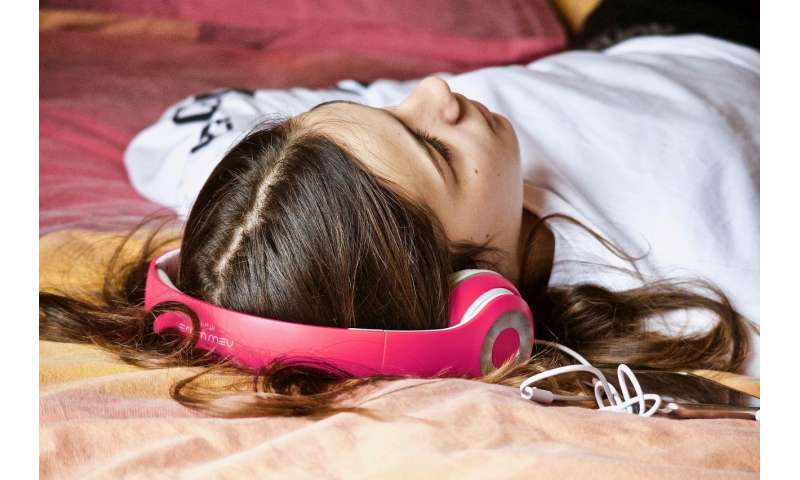
Authors of an opinion piece, based on a review of evidence and published in The Lancet Child and Adolescent Health journal, are urging policymakers to consider the effects of physical distancing measures introduced to tackle the spread of COVID-19 on young people’s social development and wellbeing.
The authors warn that adolescence is a sensitive period in young people’s lives when their social environment and interactions with peers are important for brain development, mental health and developing a sense of self. They believe that reduced face-to-face social contact with peers may interrupt this and might have long-term detrimental effects.
Adolescence is a period of heightened vulnerability to mental health problems, with 75% of adults who have ever had a mental health condition reporting that they first experienced symptoms before the age of 24 years.
The authors also discuss how the use of digital technologies and social media might mitigate some of the negative effects of social distancing, by helping to maintain social connections between young people and their peers, but further research is needed.
Many questions about the impact of physical distancing on young people remain unanswered, and there is little understanding of how other stressors experienced during the COVID-19 crisis may be affecting young people, such as economic pressures, uncertainty and loss of public events marking key rites of passage.
Nevertheless, the authors argue that policymakers should give urgent consideration to young people when considering easing of physical distancing measures, and that reopening schools and other social environments for young people should be a priority when it is considered safe to do so.
Lead author, Professor Sarah-Jayne Blakemore of the Department of Psychology at the University of Cambridge, UK, said: “Owing to the impact of the COVID-19 pandemic, many young people around the world currently have substantially fewer opportunities to interact face-to-face with peers in their social network at a time in their lives when this is crucial for their development. Even if physical distancing measures are temporary, several months represents a large proportion of a young person’s life. We would urge policymakers to give urgent consideration to the wellbeing of young people at this time.”
Dr. Livia Tomova, one of the authors of the Viewpoint, from the Massachusetts Institute of Technology, said: “It is important to note that physical distancing measures may not affect all young people in the same way. Adolescents living in a family environment, who have positive relationships with the parents, carers or siblings, may be less affected than those who do not have positive family relationships or are living alone. Given the widespread use of physical distancing policies worldwide, there is an urgent need to understand the short and long-term effects of reduced face-to-face social interaction and increased use of digital technologies on human adolescent development and mental health.”
The authors’ Viewpoint is based on a review of peer-reviewed studies on social isolation and adolescence in animals, the social development of young people (aged 10-24), as well as studies of social media use in adolescence and mental health.
The authors note that evidence from animals and other forms of social isolation are the best evidence we have (many animal studies use rodents as their preferred animal model as these are innately social creatures and fare better in social rather than isolated housing), and while they may be indicative, they may not apply perfectly to the current situation. For example, it remains unclear how relevant findings from animal studies are for the social needs of humans. Further research is urgently needed to understand how depriving young people of social interactions, especially with their peers, affects social development and mental health.
Key findings from the animal studies looking at severe isolation suggest that even short periods of social isolation during adolescence (in mice or rats) can be associated with substantial and potentially long-term effects in the chemistry and structural development of the brain of these animals.
The authors, however, found few studies into the effects of social isolation on people. There was some evidence that extreme social isolation is associated with increased distress, depression, aggression and self-harm in adults, and these effects may be amplified in younger people, but, such studies have been conducted in situations of much more extreme isolation (such as solitary confinement in prisons) than the reduced social interaction associated with physical distancing. Other studies suggest that acute social isolation in adult humans results in increased feelings of loneliness, craving for social contact, and decreased happiness, in addition to changes in brain activity. But the authors note that more research is needed.
The authors also note that adolescents’ use of digital technologies and social media might mitigate some of the negative effects of physical distancing by helping young people maintain social ties even when they are unable to interact in person.
Adolescents are among the first large-scale adopters of such technologies. Before lockdown, studies of youths found they routinely reported using digital technologies for actively social means. A study of US teenagers found they spend more than four hours a day on social media sites and almost half of them reported that they are almost constantly engaging online.
Studies on adolescent behavior suggest that core components and qualities of face-to-face interactions, including sharing information with each other, social support, and gaining social rewards, are present when young people communicate online.
Dr. Amy Orben, a co-author from the Medical Research Council Cognition and Brain Sciences Unit at the University of Cambridge, said: “Evidence suggests that the type of digital technology and how it is used are important for how beneficial it is to an adolescent’s wellbeing. For example, some studies have shown that active social media use, such as messaging or posting directly on another person’s profile, increases wellbeing and help maintain personal relationships. However it has been suggested that passive uses of social media, such as scrolling through newsfeeds, negatively influence wellbeing.”
Source: Read Full Article
